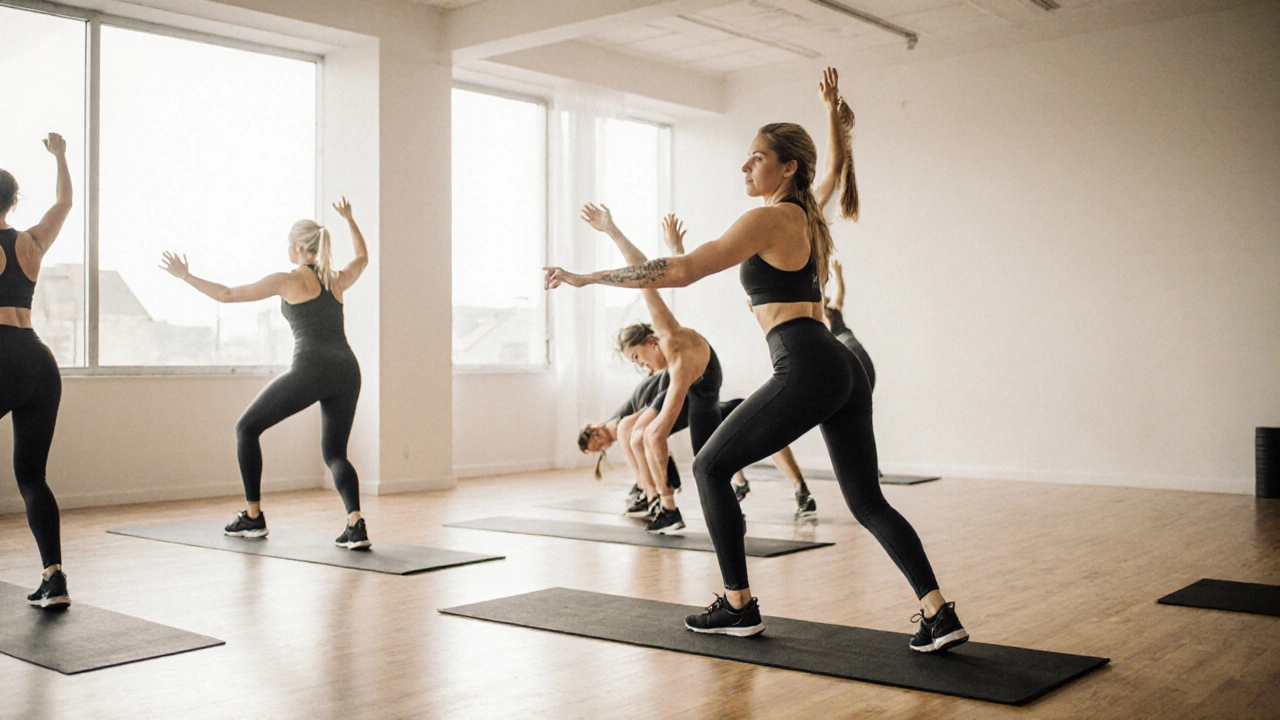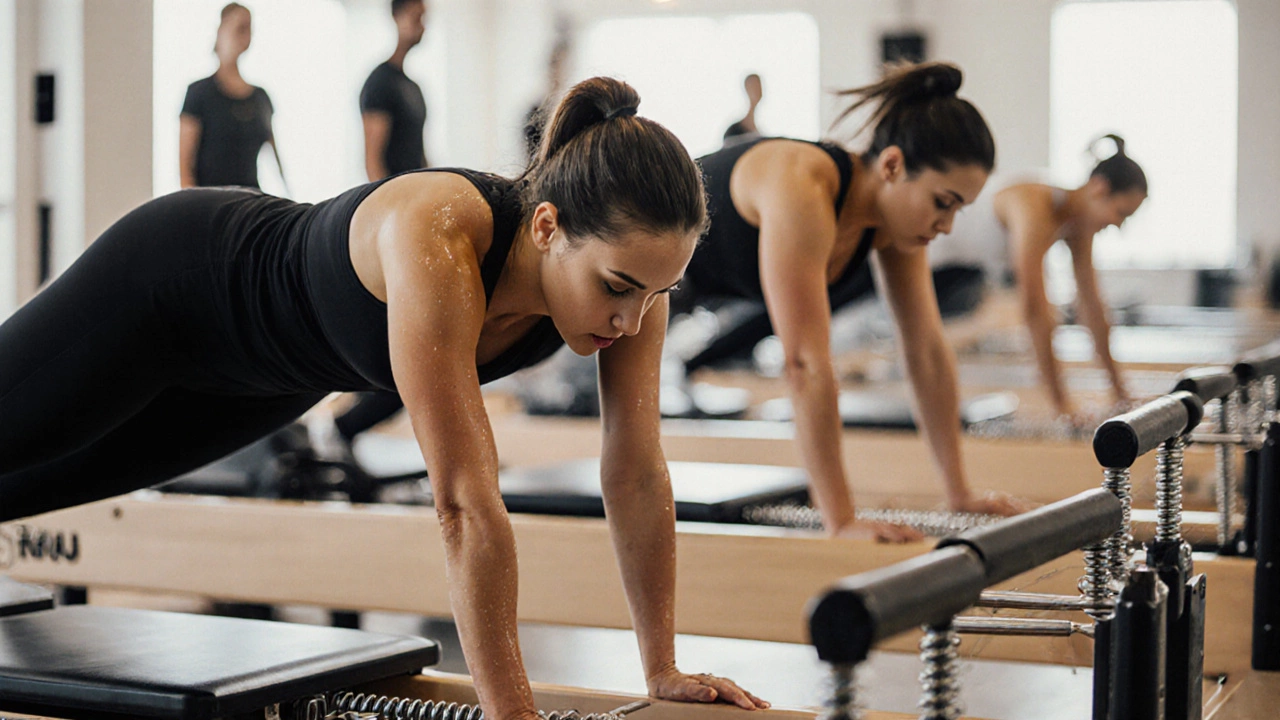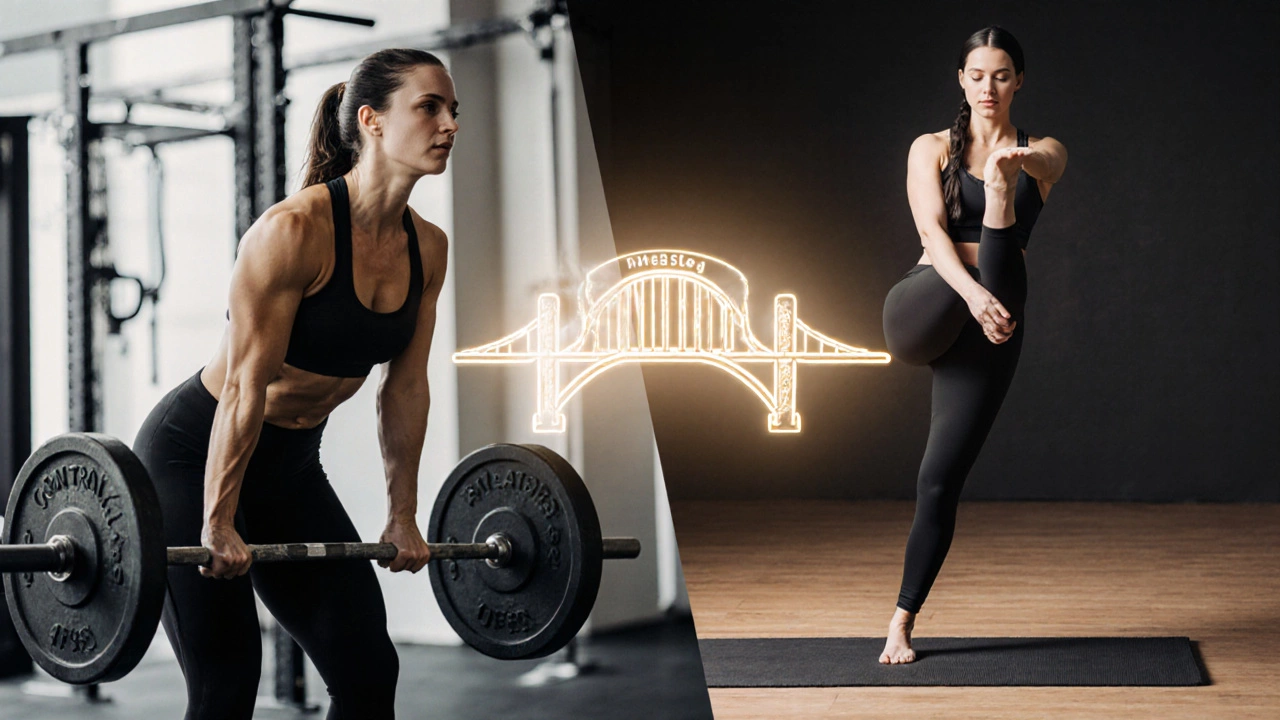
When you step into a Pilates class, you’re not lifting heavy weights or breaking a sweat under a blazing fan. You’re moving slowly, focusing on your breath, and feeling your core tighten with every controlled motion. It looks calm. But here’s the question that keeps popping up: Pilates - is it cardio or strength?
The truth? It’s both. And neither. Not in the way you’re used to thinking about them.
Pilates was created by Joseph Pilates in the 1920s as a system to rebuild strength after injury. He called it "Contrology" - control of the body through precise movement. Today’s classes still follow that blueprint: low impact, high focus, and built around core stability.
Unlike weightlifting, where you push against resistance to build bulk, Pilates uses your own body weight and spring resistance (on machines like the Reformer) to lengthen and strengthen muscles at the same time. You’re not trying to get bigger. You’re trying to get better coordinated, more balanced, and more efficient in how you move.
That’s why you’ll see people doing the Hundred - a signature move where you lie on your back, lift your legs and shoulders, and pump your arms up and down while holding your breath for ten counts. It doesn’t look like cardio. But after three rounds, your heart is racing, your arms are shaking, and your core is on fire.
Cardio means your heart rate stays elevated long enough to improve cardiovascular endurance. Traditional cardio - running, cycling, swimming - keeps you moving at 60-85% of your max heart rate for 20+ minutes.
Most traditional Mat Pilates classes don’t hit that threshold. They’re too slow. Too controlled. But modern variations? That’s where things change.
Flow-based Pilates, Power Pilates, or Cardio Pilates classes - the kind you’ll find in studios in Perth, New York, or Tokyo - mix rapid transitions between exercises. Think: Roll-Ups into Jumping Jacks on the Reformer, or Plank to Pike to Side-Leg Lifts, all in under 30 seconds. No rest. Just rhythm.
A 2023 study in the Journal of Sports Science & Medicine tracked heart rates during a 45-minute Cardio Pilates session. Participants averaged 72% of their max heart rate - right in the moderate cardio zone. That’s comparable to brisk walking or light jogging.
So yes - if your class is designed to keep you moving without stopping, Pilates can absolutely count as cardio. But not all Pilates does this. A beginner Mat class? Probably not.
Strength training builds muscle endurance and size through resistance. You lift something heavy. You do sets. You rest. You repeat.
Pilates doesn’t use dumbbells or barbells. But it uses something just as powerful: control.
Every Pilates movement requires you to activate deep stabilizing muscles - the transverse abdominis, pelvic floor, multifidus, and gluteus medius - that most people never use. These aren’t the muscles you see in the mirror. They’re the ones that keep your spine aligned, your hips level, and your posture upright.
Studies show that after just 12 weeks of regular Pilates, people improve core strength by 30-50%. That’s not just toning. That’s functional strength. It translates to fewer back pains, better balance as you age, and the ability to lift groceries without wincing.
On the Reformer, you’re pulling straps against spring resistance. The resistance can be adjusted - from light to heavy. You’re doing single-leg presses, chest presses, and rows. These aren’t just stretches. They’re strength exercises disguised as flow.
Think of it this way: If you did 10 push-ups with perfect form, you’d feel it. Now imagine doing 10 Pilates push-ups - same movement, but slower, with full control, and your core locked in. You’ll feel it even more.

The confusion comes from how Pilates looks versus how it feels.
It doesn’t look intense. No heavy weights. No jumping. No pounding. So people assume it’s just stretching or yoga.
But yoga is about flexibility, breath, and stillness. Pilates is about control, precision, and continuous tension. You’re not holding a pose - you’re moving through it with muscle engagement from start to finish.
And because Pilates doesn’t make you sweat like a spin class, many think it’s not working. But sweat isn’t the measure of effort. Muscle fatigue is.
Try this: Do 10 Pilates Roll-Ups. Then do 10 sit-ups. Which one leaves you trembling? Which one makes your lower back feel like it’s holding your whole body together? That’s Pilates strength.
Pilates isn’t for everyone - but it’s perfect for certain people.
It’s not a magic bullet. But it’s a powerful tool - especially when combined with other forms of exercise.

Want cardio AND strength from Pilates? Here’s how:
One woman in Perth, 58, started Pilates after hip surgery. She couldn’t walk without pain. After six months of twice-weekly Reformer sessions, she hiked 10 kilometers on the coast. She didn’t lose weight. But she gained control. That’s Pilates.
Pilates isn’t a cardio machine. It’s not a weight bench. It’s a system that builds strength through control, and if done right, it can elevate your heart rate enough to count as cardio.
It’s the middle ground. The quiet power. The slow burn that changes your body from the inside out.
If you want to build a body that moves well - not just looks good - Pilates is one of the most effective tools you can use. Just don’t expect it to replace your run or your squat day. Pair it. Balance it. Let it complement what you already do.
Because strength isn’t just about lifting. It’s about moving without pain. And cardio isn’t just about sweating. It’s about keeping your heart strong so you can keep moving - for years to come.
Pilates alone won’t burn enough calories for significant weight loss - it’s not high-intensity. But it builds lean muscle, which increases your resting metabolism. Combine it with walking, cycling, or light cardio, and you’ll see better results than doing cardio alone. People who do Pilates regularly also tend to move more throughout the day because they feel stronger and less stiff.
Yes, for targeted strength. Yoga focuses on flexibility, balance, and relaxation. Pilates focuses on core stability, muscle control, and resistance. Pilates movements are designed to challenge your muscles through tension and alignment - like the Hundred or the Teaser - which build functional strength yoga doesn’t emphasize as much. If you want to strengthen your deep stabilizers and improve posture, Pilates wins.
No. Mat Pilates is just as effective if done correctly. The Reformer adds resistance with springs, which can make exercises harder and more varied. But many of the most powerful Pilates moves - like the Single Leg Stretch or the Saw - are done on a mat. The key isn’t the equipment. It’s the focus on control, breathing, and precision. You can get strong with just a mat and a good instructor.
Twice a week is the minimum to feel a difference. Most people notice improved posture and core strength within 4-6 weeks. For significant strength gains or better movement quality, aim for 3-4 times a week. If you’re doing Cardio Pilates, you can do it 3-5 times a week - but make sure to include rest or mobility days to avoid overuse.
For general fitness and posture, yes. But if you want to build muscle mass, increase lifting capacity, or train for sports that require explosive power, Pilates isn’t enough. It builds endurance and control, not size or max strength. Use Pilates as a complement - not a replacement - for traditional strength training. Think of it as your body’s tuning system.
If you’re new to Pilates, start with a beginner Mat class. Focus on breathing and alignment. Don’t rush. The magic isn’t in the movement - it’s in the awareness. And that takes time.